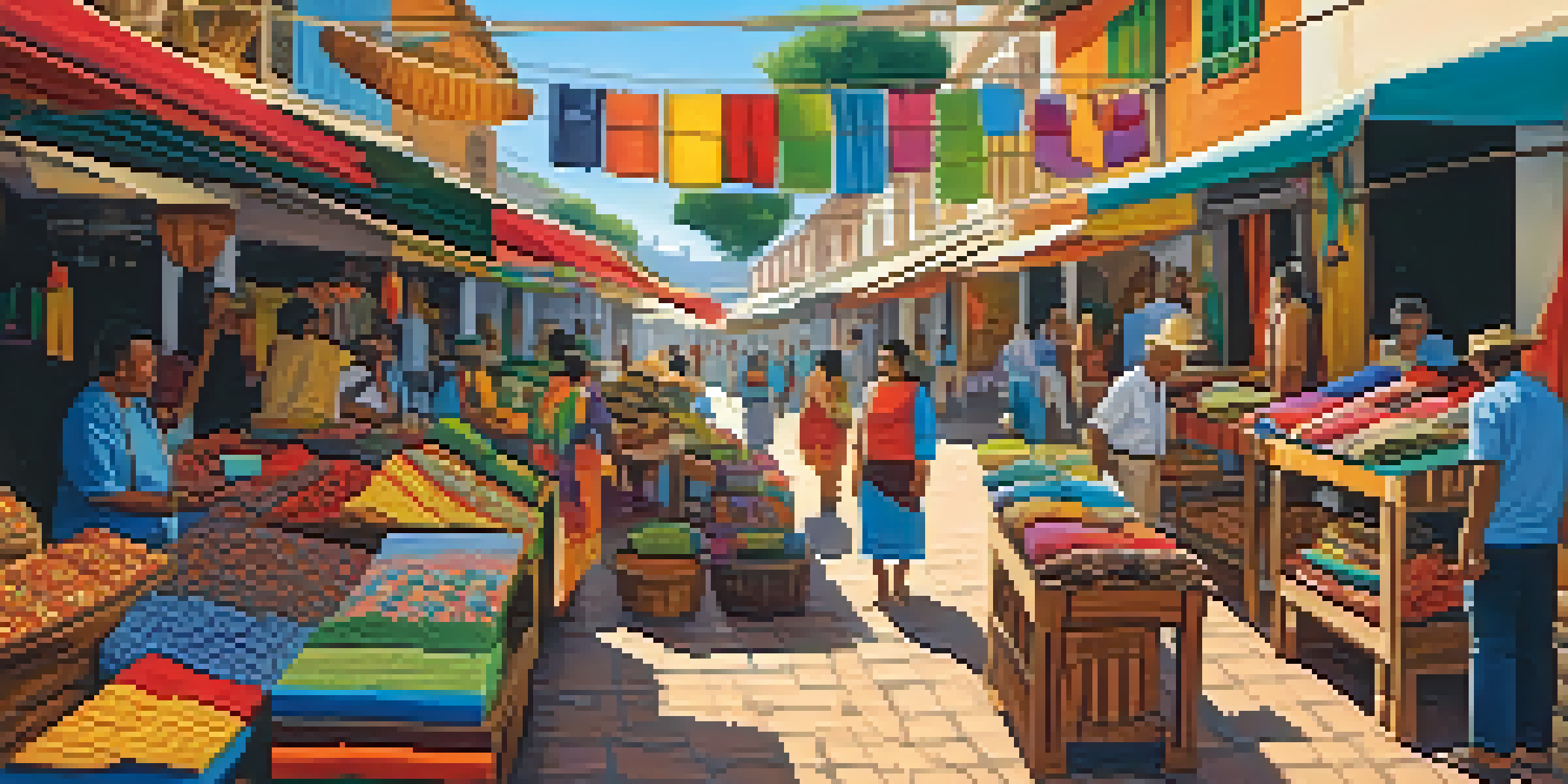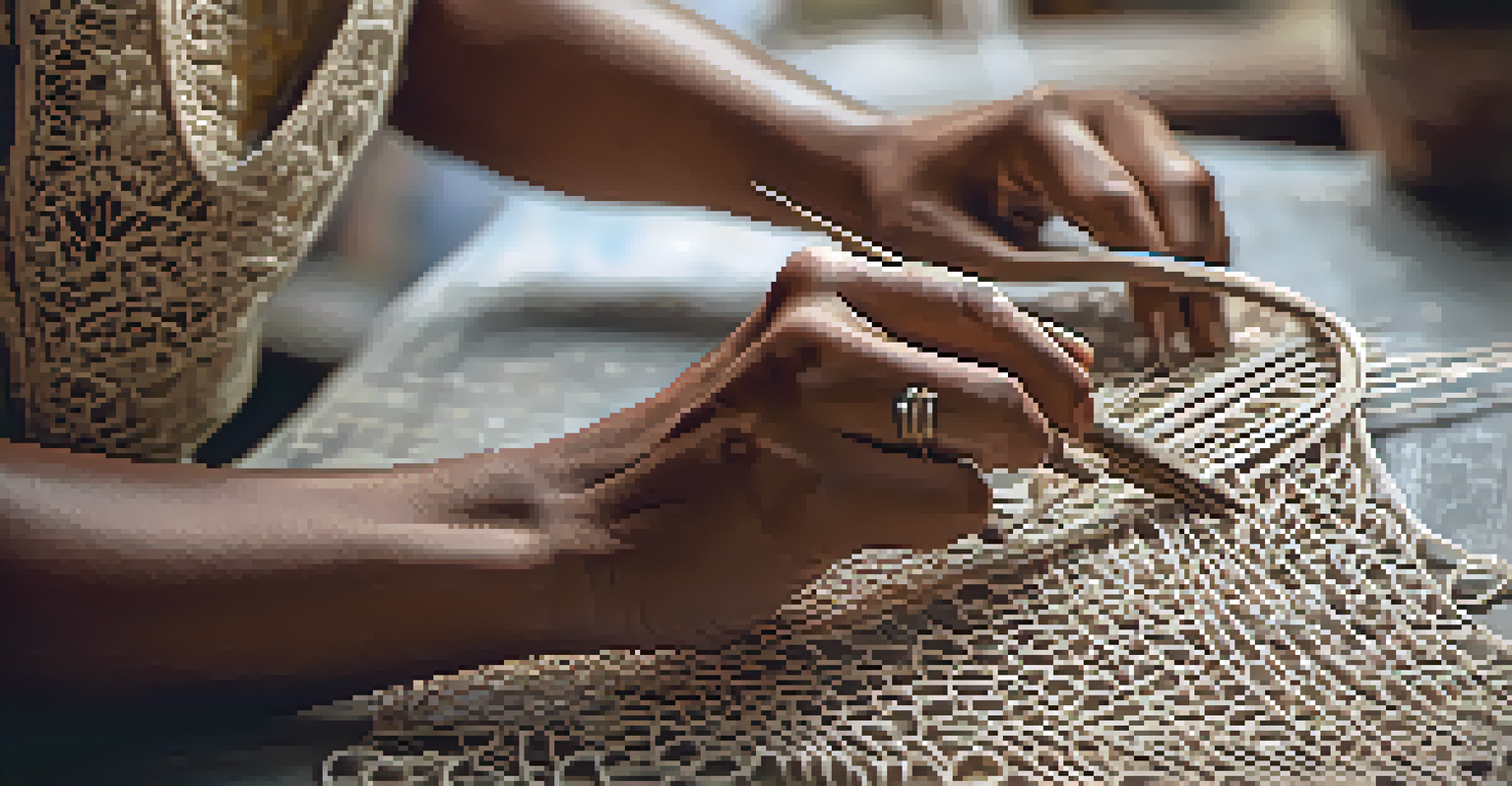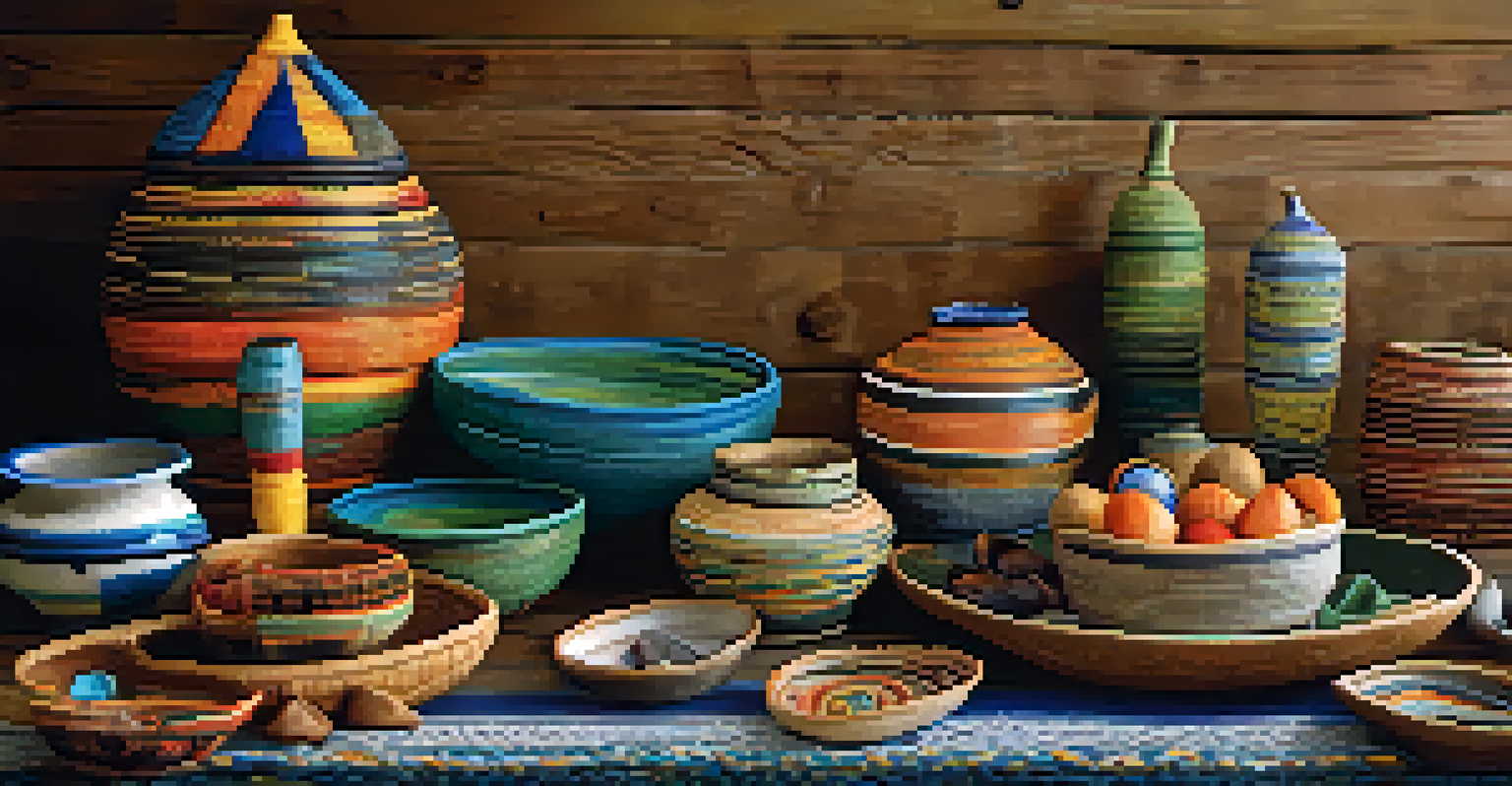Cultural Heritage: The Significance of Brazilian Handicrafts

Understanding Brazilian Handicrafts and Their Origins
Brazilian handicrafts are a vibrant reflection of the country's rich cultural diversity. They stem from various indigenous, African, and European influences that have melded over centuries. This blend creates a unique tapestry of artistic expression that tells the stories of different communities.
Art is the most beautiful of all lies.
Each region in Brazil boasts its own distinct handicrafts, often tied to local traditions and resources. For instance, the intricate lacework from the Northeast and the colorful ceramics from Minas Gerais showcase local artistry and craftsmanship. These items are not just beautiful; they also serve as a means of preserving cultural identity.
By exploring Brazilian handicrafts, we gain insight into the country's history and the lives of its people. Each piece tells a story, offering a glimpse into the traditions and values that shape Brazilian culture today.
The Role of Handicrafts in Brazilian Communities
Handicrafts play a crucial role in fostering community bonds and preserving traditions. In many Brazilian towns, artisans gather to share techniques and stories, creating a sense of belonging and shared purpose. This communal aspect is vital, as it ensures the transmission of skills to future generations.

Additionally, handicrafts provide economic opportunities for local artisans. By selling their creations, they can support their families while promoting their cultural heritage. This economic empowerment is particularly important in rural areas, where job opportunities may be limited.
Cultural Diversity in Handicrafts
Brazilian handicrafts reflect a rich blend of indigenous, African, and European influences that showcase the country's cultural heritage.
Through these crafts, communities also engage with tourists, showcasing their unique cultural heritage. This interaction not only helps sustain local economies but also educates visitors about the rich tapestry of Brazilian life.
Preserving Traditional Techniques Amid Modern Challenges
As the world becomes increasingly digital, traditional handicraft techniques face the risk of fading away. Many artisans struggle to compete with mass-produced goods that flood the market. However, a growing appreciation for authenticity and craftsmanship has sparked a renewed interest in these arts.
Craftsmanship is not a thing, it’s a way of life.
Efforts to preserve traditional techniques are gaining momentum, with workshops and training programs emerging across Brazil. These initiatives aim to revitalize interest among younger generations, encouraging them to learn and take pride in their cultural heritage. The passion for preserving these skills is evident in the dedication of both artisans and educators.
By embracing modern platforms like social media, artisans can showcase their work to a broader audience. This not only helps them reach potential customers but also raises awareness about the importance of preserving these traditional practices.
The Influence of Brazilian Handicrafts on Global Art
Brazilian handicrafts have not only enriched local culture but have also made significant waves in the global art scene. The bold colors, intricate designs, and unique materials used in these crafts resonate with international audiences, inspiring artists around the world. For example, the use of natural dyes and eco-friendly materials in Brazilian textiles has encouraged sustainable practices in global fashion.
Art fairs and exhibitions featuring Brazilian artisans have gained popularity, allowing their work to reach a broader audience. These platforms not only highlight the artisans' talents but also educate visitors about the cultural significance of their creations. This exposure fosters appreciation and respect for Brazil's artistic heritage.
Economic Impact on Local Artisans
Handicrafts provide vital economic opportunities for artisans, helping to sustain communities and preserve traditional practices.
As more people embrace global cultures, the influence of Brazilian handicrafts continues to grow. They serve as a beautiful reminder of the power of art to connect us across borders, transcending language and cultural barriers.
Exploring the Diversity of Brazilian Handicrafts
Brazil's handicrafts are incredibly diverse, reflecting the country's geographical and cultural variety. From the vibrant beadwork of the Amazonian tribes to the intricate wood carvings of the Southern regions, each craft represents a unique cultural narrative. This diversity is a testament to Brazil's rich history and the myriad of influences that have shaped it.
Moreover, the variety of materials used in Brazilian handicrafts tells a story of resourcefulness and creativity. Artisans often utilize local resources, such as clay, wood, and fibers, to create stunning pieces that are both functional and artistic. This sustainable approach emphasizes a deep connection to the land and its offerings.
By exploring this diversity, we can appreciate not just the beauty of the handicrafts but also the stories and traditions behind them. Each piece is a celebration of cultural heritage, inviting us to engage with Brazil's vibrant artistic landscape.
The Economic Impact of Handicrafts on Local Economies
Handicrafts significantly contribute to Brazil's economy, particularly in rural areas where artisan work is often a primary source of income. By promoting local crafts, communities not only sustain their livelihoods but also ensure the survival of their cultural practices. This economic model fosters resilience and self-sufficiency among artisans.
Moreover, the rise of sustainable tourism has created new opportunities for local artisans. Tourists are increasingly seeking authentic experiences, often leading them to purchase handcrafted items directly from the makers. This not only supports the local economy but also allows travelers to connect more deeply with Brazilian culture.
Global Influence of Brazilian Art
Brazilian handicrafts have gained international recognition, inspiring global artists and promoting sustainable practices through their unique artistry.
As the demand for unique, handmade goods continues to grow, the potential for economic development within these communities expands. Investing in artisan programs and fair trade initiatives can help secure a brighter future for Brazilian handicrafts and the talented individuals behind them.
Supporting Brazilian Handicrafts: How You Can Help
If you're inspired by the beauty of Brazilian handicrafts, there are several ways you can support these artisans. Purchasing handmade items directly from local markets or online platforms dedicated to fair trade is a great start. This not only provides artisans with fair compensation but also encourages them to continue their craft.
Additionally, spreading awareness about the significance of Brazilian handicrafts can make a difference. Sharing their stories on social media or discussing them with friends helps highlight the importance of preserving these cultural treasures. The more people know, the more support artisans can garner.

Lastly, consider participating in workshops or cultural exchanges that focus on Brazilian crafts. Engaging with artisans directly provides a unique perspective on their work and fosters a deeper appreciation for their art. Supporting Brazilian handicrafts means celebrating a vibrant part of cultural heritage that deserves to thrive.